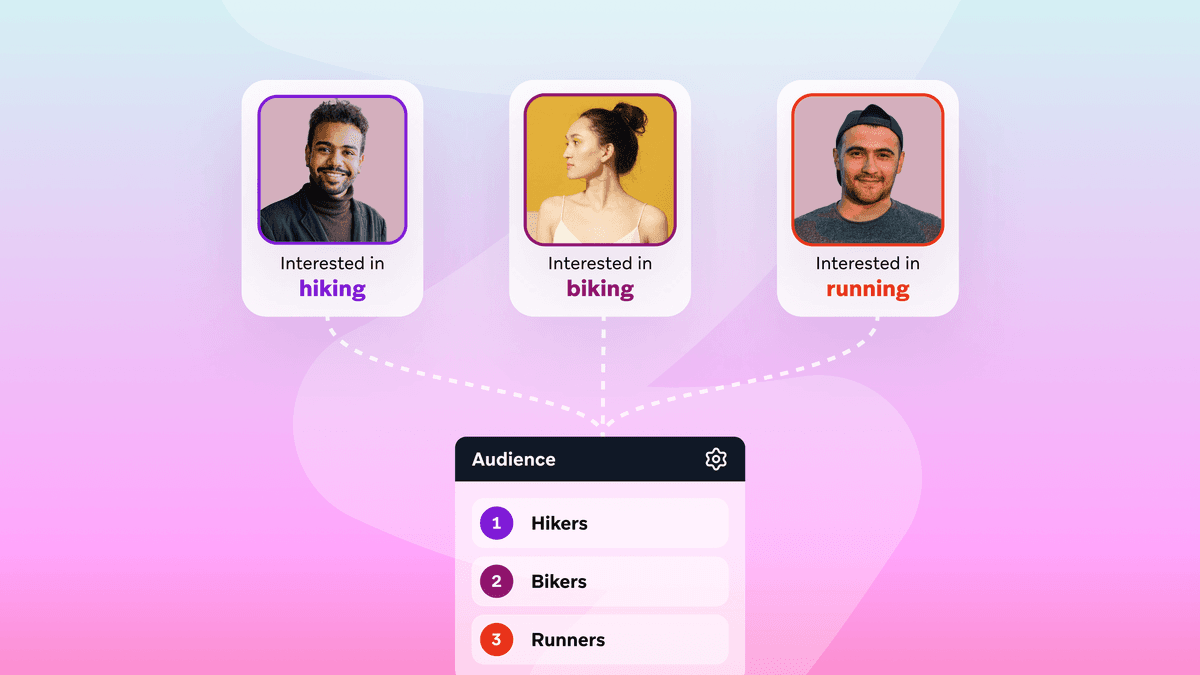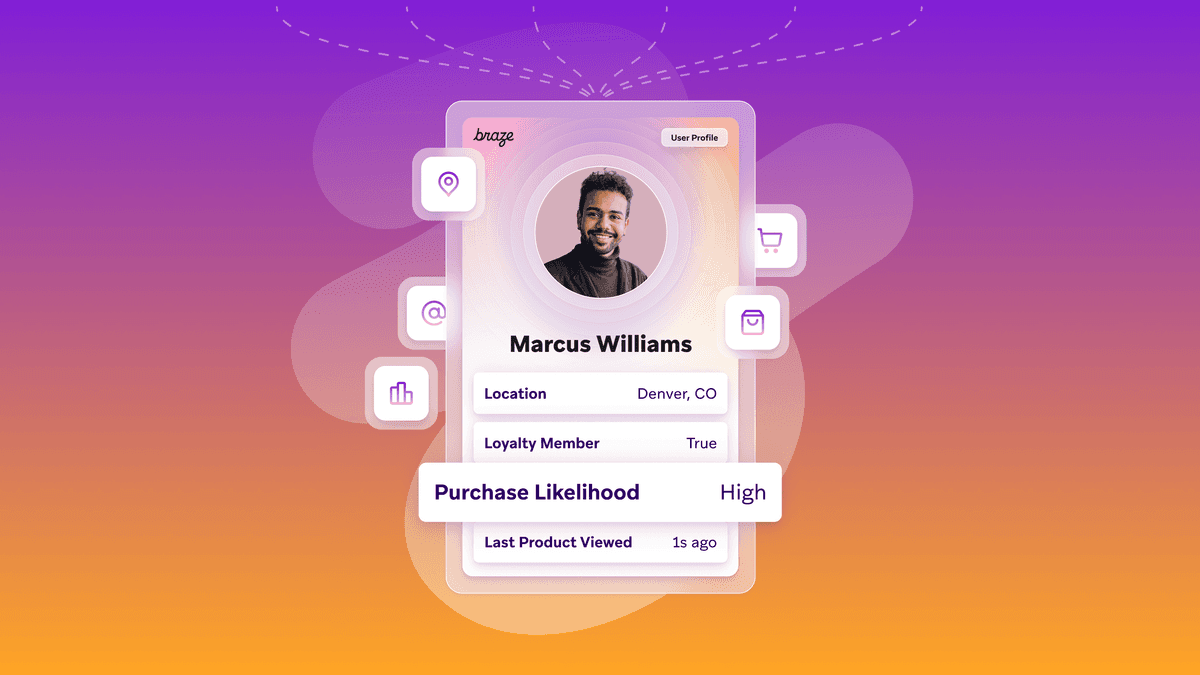Next-Gen Engagement: AI-Powered Shift in Customer Experiences
Published on November 27, 2024/Last edited on November 27, 2024/7 min read


Ido Bar
Senior Commercial Director, Technology PartnersAs businesses increasingly recognize the transformative potential of AI, more and more brands are using these tools to refine their strategies and strengthen customer relationships. This shift is not just a trend; it's a strategic move that can significantly enhance customer engagement and satisfaction. By leveraging AI-driven insights and personalized experiences, brands can connect with their customers on a deeper level, ultimately driving loyalty and fostering long-term relationships. As companies embrace this technology, they can not only improve their operational efficiencies but also unlock new avenues for growth in an increasingly competitive marketplace.
At Braze, we often say ‘There’s never been a better time to be a better marketer.’ But what an ideal time for marketers to collaborate with cross-functional teams, such as engineering and data science, to leverage new AI advancements. Braze and its partners aim to empower these collaborations, recognizing that AI’s potential lies in optimizing efforts across many roles rather than in isolated gains.
It’s also important to have a robust ecosystem of partners to help brands navigate AI adoption and address associated risks effectively.

To help brands get and stay ahead of the AI curve, we unveiled new AI, data, and orchestration capabilities at Forge 2024. During Forge, we also sat down with Matthew Corbin, Global Growth Leader at Accenture, to discuss the importance of AI for brands. The conversation covered the evolution of personalization at scale, creative automation, key considerations and use cases for marketers adopting AI, and new capabilities. Let’s dive into the exciting innovations and key takeaways from the session.
Leading with Value and trust
As the landscape of technology continues to evolve, it's important for leaders to prioritize the creation of value through AI while fostering trust among consumers. And there's good reason too, as AI continues to open up more and more opportunities. We’re already seeing that with generative AI—according to Accenture, it is estimated that 50% to 70% of the immediate opportunity to create value with generative AI lies in the customer space.
“At a leadership level, it's extremely important that AI actually creates value, and it's critical that we build trust and not lose trust as we have in the past,” said Matthew. “If you think about the history of technology, there is a major shift in technology every twenty or thirty years. From the transition from radio to television as the dominant form of media, to the shift from television to the internet as the primary news source, every few decades we see a rapid arrival and evolution of disruptive technologies that change the way humans interact with the world. And we’re seeing this with AI. Based on our analysis, 93% of CMOs expect generative AI and related technologies to change their relationship with their customers in their industry within the next five years.”
Strategic partnerships can also play a role in guiding businesses as they access and implement new tools and ways of working. For example, Accenture and AWS recently announced their collaboration to help organizations scale adoption of AI responsibly. Lisa Fairbanks, who leads Customer Experience at AWS, said “I work with many organizations that are using generative AI to augment customer service— both customer-facing and agent-facing—with the most work done in question-and-answer bots.” She explained that while a huge opportunity lies in productivity gains from creative automation, there are also significant risks involved. “Marketers are cautious about the content they produce and how automation will be perceived by customers” Lisa continues. “Concerns about brand safety, misinformation, and bias are paramount, as marketers want to ensure that their automated messages resonate positively with consumers.”
AI-powered content generation for engagement campaigns
Based on research from Accenture, early AI adopters are 3.7X more likely to use generative AI to identify new and unmet customer needs and 5.6X more likely to believe that generative AI can bring radical innovation to marketing. Brands can’t afford to sit on the sidelines and wait while these early adopters not only pull ahead, but change the customer engagement game. They are already turning creative ideas into global campaigns tailored to individual customers—and doing it cost-efficiently, cutting production time by 94%. Meanwhile, they’re also solving production and scale challenges, with 300 to 400% increase in content versions. As they learn, they are reinventing the creative process, content production, and collaboration.
Braze and AWS are striving to empower marketers and tech teams with the power of AI by showing them how to combine the native, in-platform BrazeAI™ features with Amazon Bedrock to create high-performing engagement campaigns. Amazon Bedrock is a fully managed service that offers a choice of industry leading foundation models (FMs) along with a broad set of capabilities that you need to build generative AI applications, simplifying development with security, privacy, and responsible AI.
Together, Braze and Amazon Bedrock can create powerfully adaptive content and responsive campaigns that learn from customer data in real time. Use cases include:
- Personalized re-engagement campaigns for abandoned carts: Braze Predictive Events identify users most likely to complete their purchase after abandoning their cart. Next, a brand’s Amazon Bedrock model references data streamed from Currents and uses each shopper’s past engagement to generate a personalized email subject line and customized product description, enticing the user to return to the app and complete their purchase.
- Automated, personalized promotions: Braze AI Copywriting Assistant empowers marketers to create on-brand copy for promotional campaigns, tailored to specific user segments, like frequent buyers. The copy is then seamlessly integrated with a custom Bedrock model, integrated with Connected Content to generate a personalized version for each recipient, driving higher engagement and conversions.
- Re-engagement campaigns with AI-tailored recommendations: AWS Personalize identifies inactive users most likely to re-engage. Taking it a step further, brands can use Braze Intelligent Timing and Intelligent Channel to automatically send messages at the time and on the channel the user is most likely to engage. Messages can be personalized with Braze AI Item Recommendations alongside Amazon Bedrock-generated incentives to prompt the users to reconnect with an experience that resonates with each unique user.
Final thoughts
As companies explore the benefits and challenges of AI, it's important to have an ecosystem of solutions to support you on your journey. With tools like Braze and partners such as AWS and Accenture, marketers can effectively use AI with trust and confidence to create personalized experiences that better resonate with customers.
To learn more, come meet us at AWS re:Invent or contact us to chat about our solutions.
Forward Looking Statements
This blog post contains “forward-looking statements” within the meaning of the “safe harbor” provisions of the Private Securities Litigation Reform Act of 1995, including but not limited to, statements regarding the performance of and expected benefits from Braze and its products. These forward-looking statements are based on the current assumptions, expectations and beliefs of Braze, and are subject to substantial risks, uncertainties and changes in circumstances that may cause actual results, performance or achievements to be materially different from any future results, performance or achievements expressed or implied by the forward-looking statements. Further information on potential factors that could affect Braze results are included in the Braze Quarterly Report on Form 10-Q for the fiscal quarter ended July 31, 2024, filed with the U.S. Securities and Exchange Commission on September 6, 2024, and the other public filings of Braze with the U.S. Securities and Exchange Commission. The forward-looking statements included in this blog post represent the views of Braze only as of the date of this blog post, and Braze assumes no obligation, and does not intend to update these forward-looking statements, except as required by law.
Related Tags
Be Absolutely Engaging.™
Sign up for regular updates from Braze.




